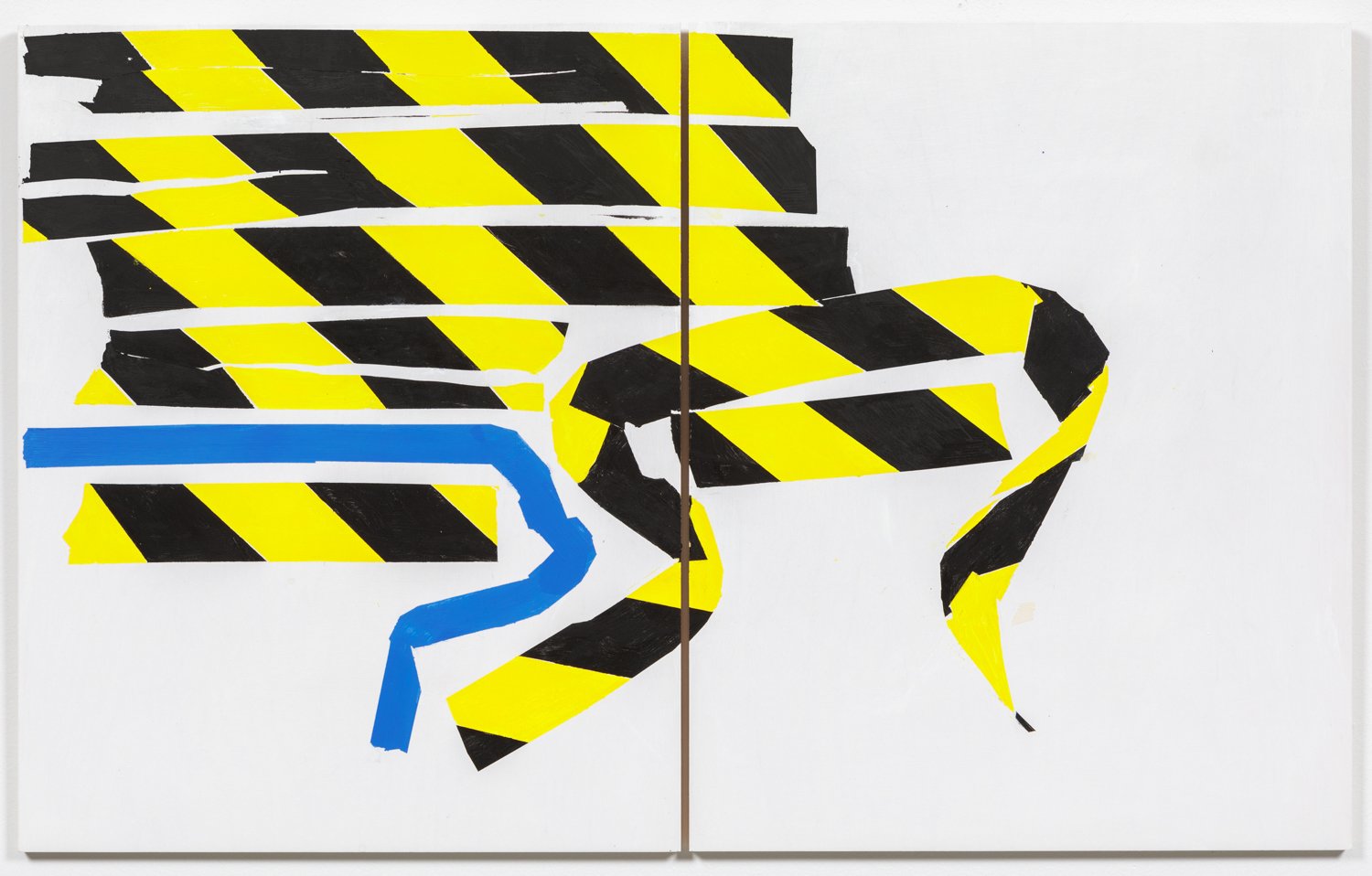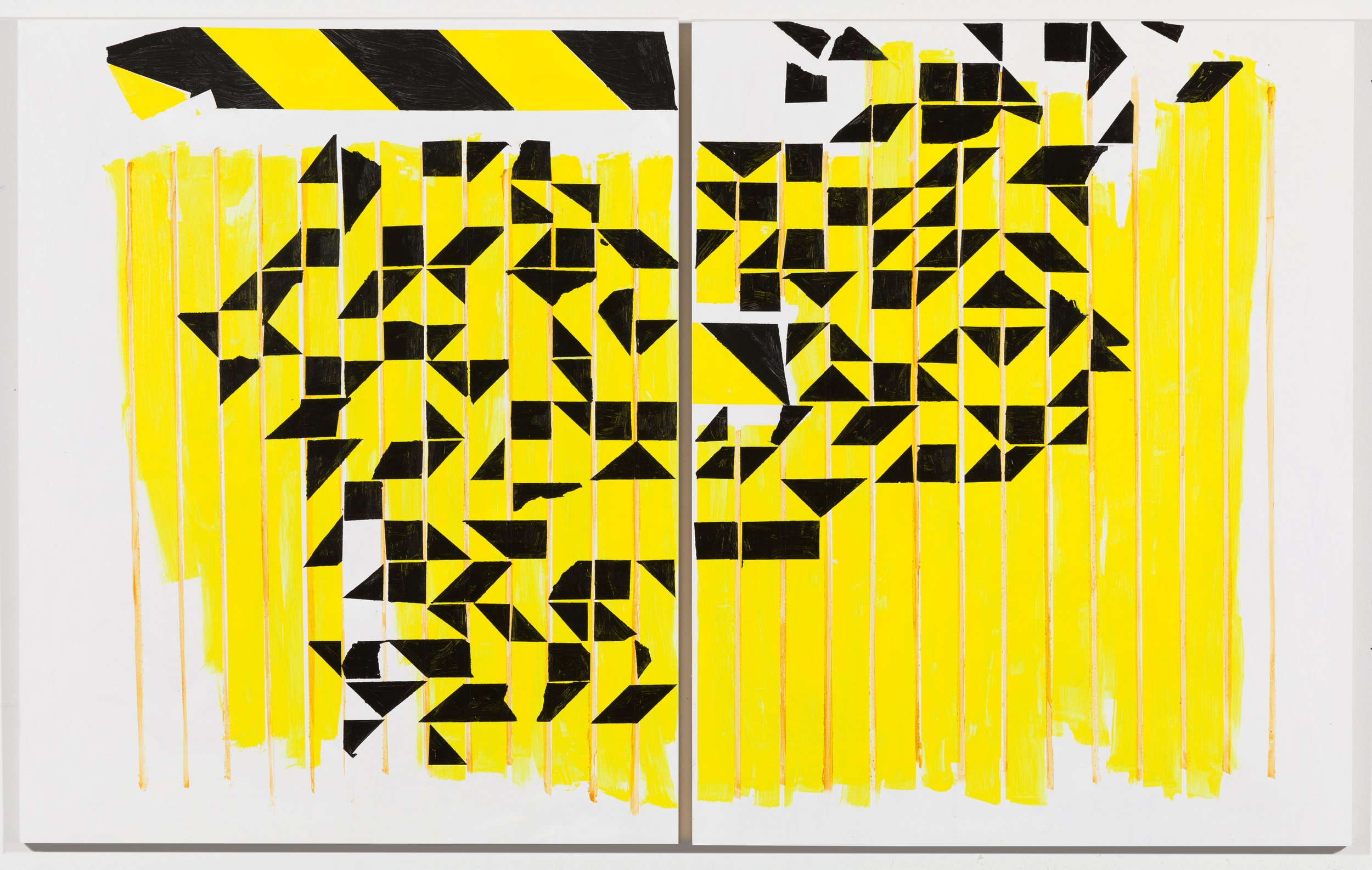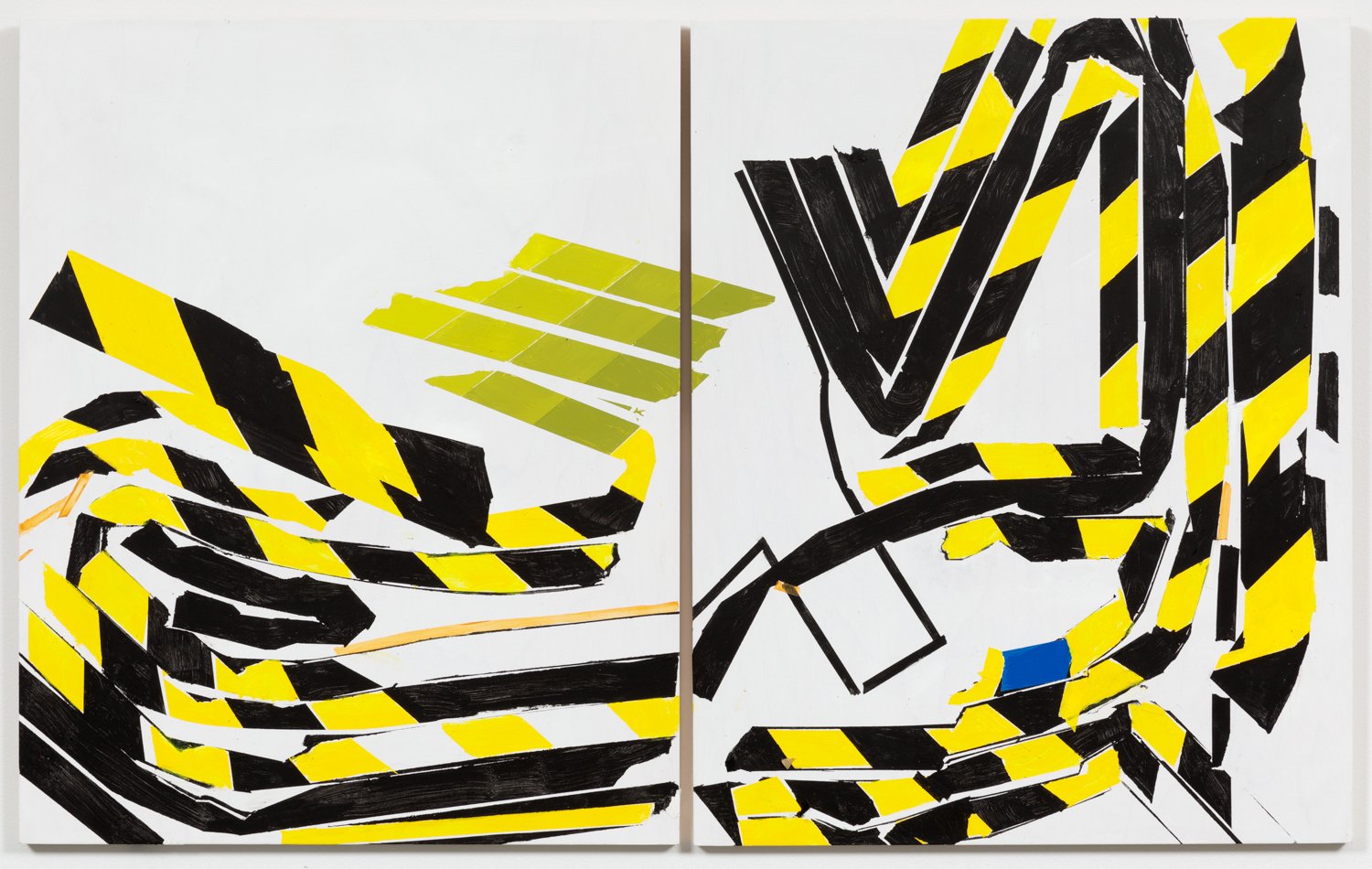Indecidability of the Sign: Yellow/Black
Series A, Series B, Series C
Meander Collab
Acrylic on board
20” x 32 1/4” diptych
2019 - ongoing
INDECIDABILITY OF THE SIGN: YELLOW/BLACK is an ongoing series of diagrammatic works that addresses these questions: Can the sign of barrier tape be an actual prohibition that shifts to that of permission? What is the semiotic of this undoing and remaking?
Acrylic imitating tape is the material simulation, undergoing iterations more and more altered--altered through procedural moves: sliced and splaying, and so reoriented slantwise, off-course; folded, hence obscuring itself; or with fragments of the tape as remainders, etc. Meanwhile, fugitive cultural knowledge emerges from alignment and realignment, overlap and obscurity: a slipping glimpse of chevron or harlequin emerges and disappears in the rippling distortions that have been induced; selvage quilting or sawtooth cubism can be glimpsed otherwise, as intertext. Given the signage of yellow/black, is only long barrier tape productive of potential sense?
Further: the graphical lexicon is made to speak other languages. In the science of perception, the standard pattern of barrier-tape is called a grating. In juxtaposition here is what is called a gradient (sequenced tonalities). These perceptual schemes are incommensurable: they cannot be equivalent or interchangeable. Why not? Utilizing the identical yellow hue for both grating and gradient produces a contrary set of terms. For the grating, alternation of pure hue with black is the formula. For the gradient, however, admixture is required, an admixture of black by degrees, the method not yielding a dark and darker yellow, but a morphing of yellow into an ambiguously hued greenish color sample. Utilizing the identical yellow in both cases creates a different kind of internal relationship in ordering.
Moreover, these non-equivalent color samples speak different cultural languages, belong to differing discourses: prohibition or caution, versus permission and decorative indeterminacy of the color swatch.
A sub-group of works attenuates the barrier tape, with bends, loops and tangles emerging from its drawn-out linear form; a string of two-ply that becomes twine rescues the “prohibited” sense of barrier tape by endowing it with the affirmative constructive uses to which twine is often put. This can occur because these same works have dramatized the linear element by placing it in contrast with a grid or field of even distribution.
A curious cultural note: coincidently, the ubiquitous signage of barrier tape that we have taken for granted for decades is now being phased out; being discontinued, it is no longer readily available in neighborhood hardware stores, where CAUTION tape is the signage offered for sale instead. The sign—presupposed to be culturally stable rhetoric—has lost self-evidence, and the semiotic of barrier tape is taking this cultural instability into account.









































